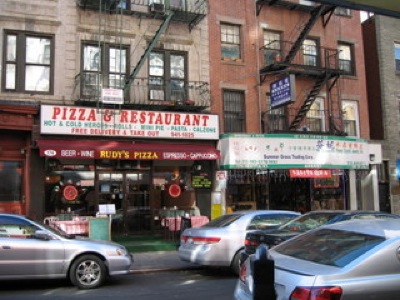Little Italy: Economy
From Decoding New York
| Introduction |
| Little Italy |
| * Evolution |
| * Here v. There |
| * Economy |
| * What's Real |
| Koreatown |
| * Evolution |
| * Here v. There |
| * Economy |
| * What's Real |
| Comparison |
| * Photo Gallery |
| * Sources
|
The mainstream economy in Little Italy comes from restaurants, shops, bakeries, etc. Generally stores are family-owned businesses that have been passed down from generation to generation. Some stores have been there for over a hundred years! Outside of certain stores are food carts that sell pastries such as canolis or other desserts like gelato. The underground economy does not really exist because of a very small Italian population. The neighborhood is relatively small and is more or less limited to businesses that have been there for quite some time. As such, most businesses have a degree of respectability to them.
Little Italy seems to exist mainly for tourists, and tourists are the ones keeping the area alive and popular. There are a decent number of gift shops targeting tourists. In these gift shops, Italian trinkets are sold that include Italian t-shorts, aprons, and anything else you could think of with the Italian colors.
Not every store in Italy is Italian owned. There are stores owned by people of other nationalities. For example, there is a pet store selling fish owned by a Chinese person. These stores get along quite amiably with their Italian neighbors. No tension between the two cultures exists. As a matter of fact, many businesses in Little Italy employ people of various ethnicities. For example, the store may be Italian owned, but the cashier would be from Peru or the waitress would be Chinese. There is both diversity on the streets of Little Italy as well as within the businesses themselves.

